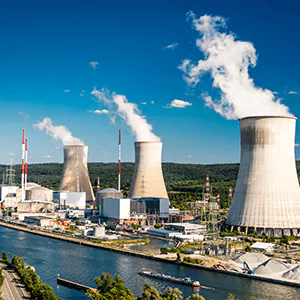Impact on Carbon and Smog Reduction
What's my PHEV's Impact?
The benefits and impacts that Hybrid Electric Vehicles have on the environment is an ongoing debate with experts and research studies being conducted every day. Today, researchers and regulators are focusing on something called "Well to Wheel" emissions. Simply put, this takes into consideration not just the emissions from the vehicle itself when operating (called "tailpipe" or "tank-to-wheel" emissions), but also the emissions associated with the production, processing, and distribution of the vehicle and its fuel over the lifetime of the vehicle. You could say it's "taking a step back" to consider a vehicle from beginning to end.
Let's start off easy.
A few acronyms define what we're talking about regarding electric vehicles, conventional gas or diesel vehicles, and hybrids.
- EV - Electric Vehicle
- PHEV - Plug-in Hybrid Electric Vehicle
- IC - Internal Combustion (conventional vehicle)
Types of Emissions
Every type of energy production requires some output of carbon dioxide, however, for renewable energy sources, these are typically extremely low. As well, every vehicle creates emissions in its manufacturing process.

Greenhouse Emissions are a major contributor to global warming.

Smog Emissions, such as NOx, SOx, CO and particulates which contribute to poor air quality known to shorten the lives of millions of people per year.

"Zero Emission" is when a vehicle itself produces no emissions in its use, ie: no tailpipe emissions. However, this doesn't mean that they are completely emissions-free.
Energy Sources
Most electricity grids are made up of multiple types of electricity generation. These different types are typically broken down into 3 areas: nuclear, renewable, and fossil fuel.
Over many years, Internal Combustion (IC) engine vehicles have significantly reduced their smog emissions. However, IC vehicles are impacted by engine wear, which has a negative impact on emissions performance.

Nuclear Energy is extremely clean with very low CO2 production or smog pollution. However, nuclear fuel is very dangerous to life forms and spent nuclear rods are difficult to dispose of. As well, nuclear disasters are absolutely catastrophic, capable of killing and damaging life over very large areas.

Fossil Fuel Energy is extremely polluting with high levels of both carbon dioxide and smog emissions. Coal is typically the worst offender, while natural gas is cleaner burning, it has the added problem of fugitive methane emissions (gas leaks) which are much worse for the environment than carbon dioxide.

Renewable Energy, such as solar, wind, and hydroelectric is extremely clean. However, solar and wind deliver energy intermittently and cannot always be relied upon. Hydroelectric power develops electricity cleanly and consistently, however, construction projects have very high capital costs and an environmental impact from flooding large areas.
Vehicle Production Emissions
The other major factor to consider is Production Emissions from making the vehicle itself. In general, a Hybrid Electric Vehicle or Battery Electric Vehicle is more energy intensive to make than a combustion vehicle. Typically, the larger the vehicle and the larger the battery, the more CO2 emissions are produced. Not only that, larger vehicles use more energy and create more emissions in the use phase as well.
No matter where you drive, a hybrid will reduce smog-forming emissions, which has the potential to drastically improve air quality in our cities.
Battery Recycling
Recycling lithium-ion batteries is making major strides in industry growth and technologies. Recycling batteries offer concentrations of minerals far denser than mining, making it extremely worthwhile.
By recycling batteries for their minerals, there is a significant reduction in the CO2 production of batteries, and this credit can be consequently carried forward as more batteries are produced.